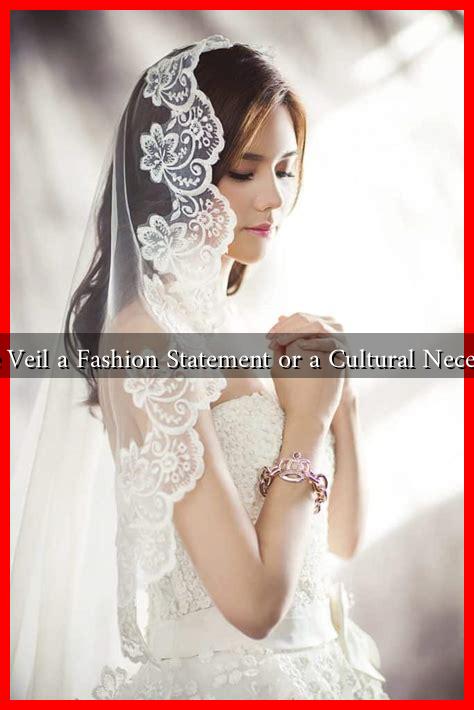-
Table of Contents
- Is the Veil a Fashion Statement or a Cultural Necessity?
- The Historical Context of the Veil
- Cultural Necessity vs. Fashion Statement
- 1. Cultural Necessity
- 2. Fashion Statement
- Case Studies: The Veil in Different Contexts
- 1. The Hijab in Western Countries
- 2. The Bridal Veil
- Conclusion: A Complex Symbol
Is the Veil a Fashion Statement or a Cultural Necessity?
The veil, a piece of fabric that has been worn by women across various cultures for centuries, often sparks debate regarding its significance. Is it merely a fashion statement, or does it serve a deeper cultural necessity? This article delves into the multifaceted role of the veil, exploring its historical context, cultural implications, and contemporary interpretations.
The Historical Context of the Veil
The veil has a rich history that spans numerous civilizations and religions. Its origins can be traced back to ancient Mesopotamia, where women wore veils as a symbol of modesty and social status. Over time, the veil has evolved, taking on different meanings in various cultures:
- Ancient Rome: Veils were worn by married women as a sign of their marital status.
- Islamic Tradition: The hijab and other forms of veiling are rooted in religious texts, emphasizing modesty and piety.
- Western Fashion: In the 20th century, veils became popular in bridal fashion, symbolizing purity and tradition.
Understanding this historical context is crucial in recognizing the veil’s significance beyond mere aesthetics. It has been a marker of identity, social status, and cultural heritage throughout history.
Cultural Necessity vs. Fashion Statement
The debate surrounding the veil often centers on whether it is a cultural necessity or simply a fashion statement. This dichotomy can be explored through various lenses:
1. Cultural Necessity
For many women, wearing a veil is deeply rooted in cultural and religious beliefs. In Islamic cultures, for instance, the hijab is seen as an expression of faith and a commitment to modesty. According to a study by the Pew Research Center, approximately 62% of Muslim women worldwide choose to wear the hijab, citing personal conviction and cultural identity as primary reasons.
- Religious Significance: Many women view the veil as a commandment from God, making it a non-negotiable aspect of their faith.
- Community Identity: Wearing a veil can foster a sense of belonging within a community, reinforcing cultural ties.
- Personal Empowerment: For some, the veil represents autonomy over their bodies and choices, challenging Western stereotypes.
2. Fashion Statement
Conversely, the veil has also been embraced as a fashion accessory, particularly in contemporary society. Designers like Dolce & Gabbana and Chanel have incorporated veils into their collections, showcasing them on runways and in fashion magazines. This trend raises questions about the commodification of cultural symbols:
- Fashion Industry Influence: The veil is often reinterpreted in high fashion, detaching it from its cultural roots.
- Personal Expression: Many women use veils to express their individuality, experimenting with colors, fabrics, and styles.
- Globalization: The blending of cultures has led to a fusion of traditional and modern styles, making the veil a versatile fashion item.
Case Studies: The Veil in Different Contexts
To further illustrate the dual nature of the veil, consider the following case studies:
1. The Hijab in Western Countries
In countries like France, where secularism is a core value, the hijab has become a contentious issue. The 2004 law banning religious symbols in public schools sparked protests and discussions about freedom of expression versus cultural assimilation. Many Muslim women argue that wearing the hijab is a personal choice, while critics view it as a symbol of oppression.
2. The Bridal Veil
In Western cultures, the bridal veil has transformed into a fashion statement, often detached from its original meanings. While it still symbolizes purity and tradition, many brides choose veils for aesthetic reasons, showcasing intricate designs and embellishments. This shift highlights how cultural symbols can evolve over time.
Conclusion: A Complex Symbol
The veil is a complex symbol that embodies both cultural necessity and fashion statement. For many women, it serves as a vital expression of identity, faith, and community. Simultaneously, it has been appropriated by the fashion industry, leading to a reinterpretation that can sometimes overshadow its cultural significance.
Ultimately, the veil’s meaning is subjective and varies from person to person. Understanding this complexity is essential in fostering respect and appreciation for diverse cultural practices. As society continues to evolve, so too will the interpretations of the veil, making it a fascinating subject for ongoing discussion.
For further reading on the cultural significance of the veil, you can explore resources from the Pew Research Center.

